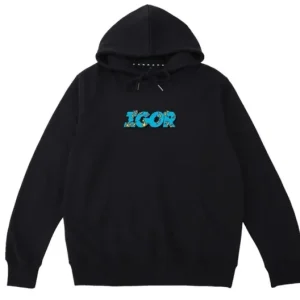The Financial Benefits of Circular Fashion
Changing Consumer Expectations
Modern consumers demand more than just style; they seek authenticity and accountability. Visit now https://spiderofficial.us/ Surveys indicate that shoppers prefer brands that prioritize ethical labor practices, sustainable materials, and transparent operations. Social media amplifies these demands, enabling consumers to scrutinize brands in real-time and share their findings with global audiences.
Combating Greenwashing and Misinformation
The rise of sustainability in fashion has also led to greenwashing—a deceptive practice where brands exaggerate their eco-friendly efforts. Social media serves as both a battleground and a solution. Influencers, activists, and watchdog accounts expose greenwashing claims, forcing brands to provide verifiable evidence of their sustainability efforts.
The Role of Social Media in Promoting Transparency
Live-Streaming Manufacturing Processes
Some brands now use live-streaming to show their manufacturing processes. Platforms like TikTok and Instagram allow brands to broadcast the creation of garments, providing a firsthand look into factory conditions and craftsmanship.
Behind-the-Scenes Content
Behind-the-scenes content is a powerful way to humanize a brand. Videos showcasing workers, design teams, or sourcing trips create an emotional connection while demonstrating accountability. Social media posts highlighting these processes foster trust among consumers.
Interactive Q&A Sessions
Hosting live Q&A sessions on platforms like Instagram or YouTube enables brands to address consumer concerns in real time. Transparency initiatives like these empower consumers to ask questions about materials, labor practices, and sustainability commitments, fostering a dialogue between brands and their audiences.
Technological Innovations Driving Transparency
Blockchain for Supply Chain Tracking
Blockchain technology is revolutionizing transparency. By digitizing and decentralizing supply chain data, blockchain allows consumers to verify the origin of materials, monitor shipping processes, and ensure compliance with labor laws. Brands like Gucci and Everlane have started implementing blockchain solutions to assure consumers of their ethical practices.
AI-Powered Analytics
Artificial intelligence helps brands analyze consumer feedback on social media to identify concerns about transparency. It also enables more accurate tracking of emissions, water usage, and other environmental metrics, which brands can share with their audiences.
Augmented Reality (AR) in Transparency Campaigns
AR features on apps like Snapchat or Instagram allow brands to show interactive visualizations of their supply chains. For instance, consumers can scan a product tag and see a 3D map of its journey, from raw material sourcing to store shelves.
How Leading Brands Set the Standard for Transparency
Patagonia: The Pioneer in Ethical Storytelling
Patagonia has long championed transparency through its supply chain disclosures and environmental campaigns. Check it now https://www.sp5derhoodieshop.net/ The brand uses social media to share updates on its Fair Trade Certified factories and recycled materials initiatives, setting a gold standard for other brands.
H&M: Transparency in Fast Fashion
While fast fashion often faces criticism, H&M is making strides with its Conscious Collection. The brand provides detailed information about the materials used in each garment and uses Instagram to highlight its sustainability goals.
Stella McCartney: Luxury Meets Sustainability
Stella McCartney combines luxury fashion with sustainability and transparency. Through engaging social media posts, the brand educates followers about its vegan materials, closed-loop production systems, and commitment to reducing waste.
Challenges in Achieving Full Transparency
Balancing Profitability and Transparency
Transparency often comes with a high cost. Smaller brands may struggle to implement technologies like blockchain or sustainable materials due to budget constraints. Even larger brands must find ways to maintain profitability while investing in ethical practices.
Navigating Global Supply Chains
Global supply chains are notoriously complex, making it difficult for brands to monitor every stage of production. Social media can highlight gaps in transparency, but achieving 100% clarity remains a challenge for even the most committed brands.
The Future of Fashion Transparency
Consumer-Centric Design Philosophy
The future of fashion lies in designs informed by consumer feedback. Social media provides a direct channel for brands to understand what matters most to their audiences, from sustainable fabrics to inclusive sizing.
Enhanced Partnerships with Influencers
Influencers play a critical role in holding brands accountable. Collaborations with influencers who prioritize ethical fashion can amplify transparency efforts, reaching broader audiences.
Legislative Push for Transparency
Governments worldwide are implementing stricter regulations to ensure transparency in fashion. Social media campaigns advocating for compliance will become increasingly important as consumers and lawmakers demand greater accountability.
Conclusion: Transparency as the New Currency in Fashion
Fashion brands can no longer afford to operate behind closed doors. In the age of social media and digital activism, transparency is not just a marketing tool—it is a business imperative. By leveraging cutting-edge technologies, engaging storytelling, and meaningful consumer interactions, brands can create a future where authenticity and accountability drive success.





